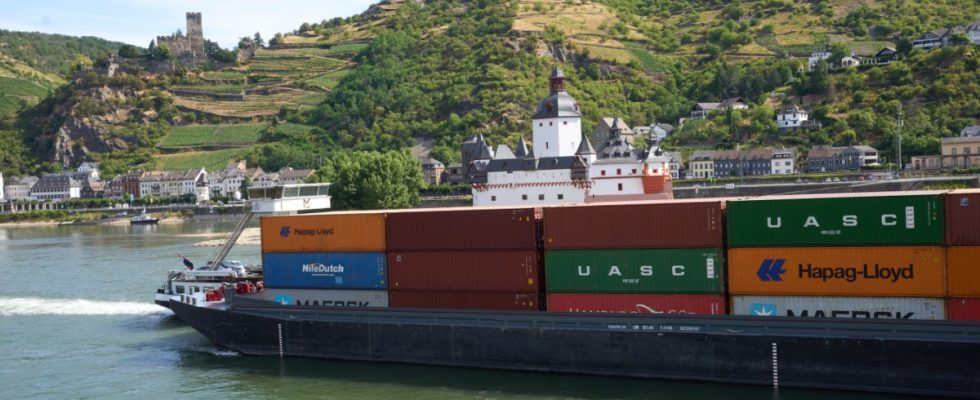The water level at the Kaub narrow point, which is important for shipping on the Rhine, fell to an annual low on Monday. At the beginning of the week it was only 92 centimeters and thus seven centimeters below the value on Sunday, according to measurements by the Federal Waterways and Shipping Administration. “This is the lowest level this year,” said an employee of the Rhine Waterways and Shipping Office of the Reuters news agency. “The water level was last lower in the summer of last year.”
In mid-August 2022, only 32 centimeters were measured at times in Kaub, south of Koblenz, which led to considerable restrictions on inland navigation on Germany’s by far most important waterway. According to experts, large container ships need water levels of at least 135 centimeters at Kaub in order to be able to be fully loaded. According to the forecast by the Federal Waterways and Shipping Administration, this mark will be missed again in the coming days, even if the water level is expected to rise again after the recent heavy rainfall.
Unlike the low water last summer, experts believe that this time it should be manageable due to the weak economy. “Due to the recession, demand for shipping space is currently declining,” DTG shipping cooperative CEO Roberto Spranzi recently told Reuters. For fear of bottlenecks, many companies had stocked up sufficiently on preliminary products and raw materials.
The Rhine is an important transport route for goods such as grain, coal, petrol and heating oil. Shallow water leads to surcharges on the freight rates and thus to higher costs. Inland waterway transport last year transported less than ever since reunification, also because of the impairments caused by the low water on the Rhine. 182 million tons of goods were transported on the waterways, 6.4 percent less than in 2021, as determined by the Federal Statistical Office. The chemical company BASF – whose largest plant at its headquarters in Ludwigshafen receives around 40 percent of the raw materials from the river and which also uses the Rhine water for cooling – has therefore armed itself with special low-water ships after the stresses in 2018.

